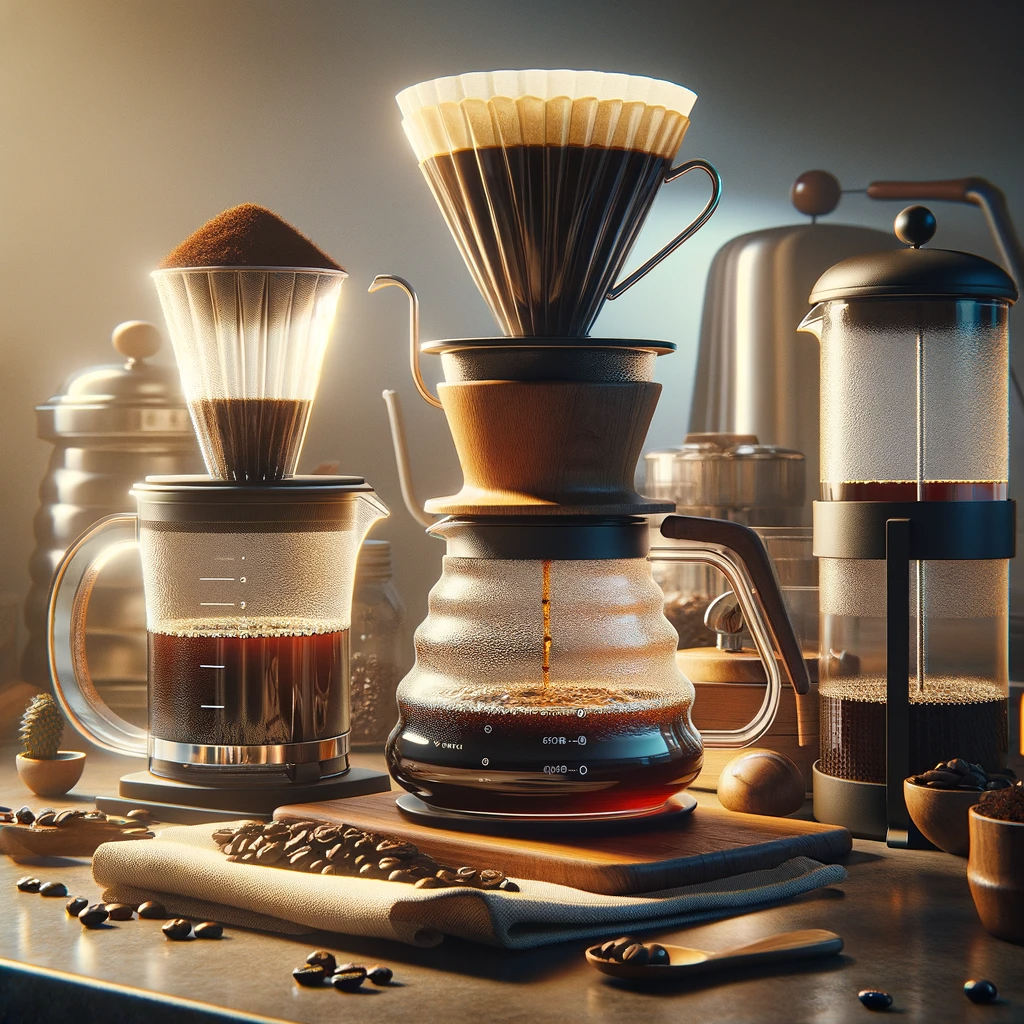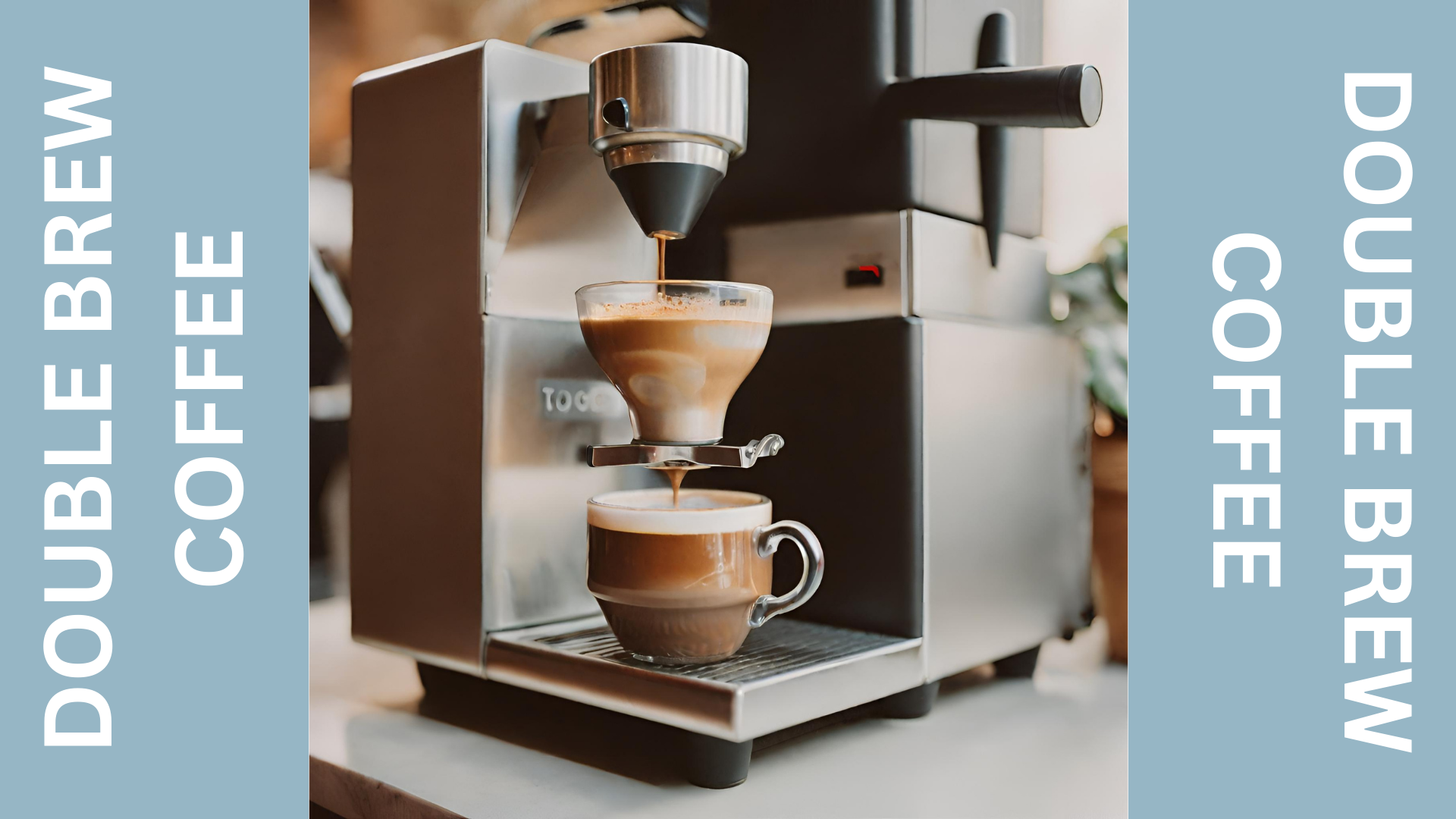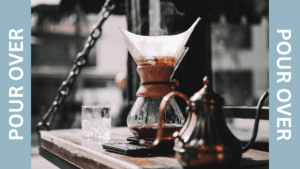
Welcome to the world of double brewing, a technique that promises to revolutionize your coffee experience. For those who find regular brews lack intensity or complexity, double brewing offers a new frontier. This comprehensive guide will take you through everything from the basics to the intricate nuances of double brewing.
Disclaimer: Some of the links within this post are affiliate links which means if you click on our recommended products and decide that product is right for you, I may earn a commission on that purchase at no cost to you. As an Amazon Associate, I earn from qualifying purchases. All content and opinions remain my own.
The Best Double Brewing Guide For 2024
Table of Contents
What is Double Brewing?
Double brewing coffee, a term that might sound redundant at first, is a fascinating concept in the world of coffee brewing that pushes the boundaries of flavor and intensity. At its core, double brewing is exactly what it sounds like: brewing coffee with coffee. Instead of using water as the solvent, already brewed coffee is used for a second round of brewing, leading to a cup that is remarkably rich and robust.
The Origin and Popularity:
While the exact origins of double brewing are unclear, it’s a technique that has gained traction among coffee enthusiasts who are always in pursuit of a more potent brew. This method has become particularly popular in regions where coffee is not just a morning routine but a cultural staple, such as in Scandinavian countries, where coffee consumption is among the highest in the world.
The Science Behind the Process:
From a scientific standpoint, double brewing is fascinating. Normal brewing extracts flavors and oils from coffee grounds using water. When coffee is used instead, the extraction dynamics change. The already present coffee compounds interact with the new grounds, leading to a different flavor profile. This method doesn’t just increase the caffeine content; it amplifies the inherent flavors of the coffee beans, whether it’s the nutty undertones, fruity notes, or the classic coffee bitterness.
Why Double Brew?
The primary reason for double brewing is to achieve a coffee that’s more intense and flavorful than what typical brewing methods offer. It’s ideal for those who find regular coffee too mild or for recipes that require a strong coffee base, like certain espresso-based drinks or coffee-flavored desserts.
However, double brewing isn’t just about a stronger cup; it’s about exploring new dimensions of flavor. Coffee lovers who appreciate the subtleties in different bean varietals and roasts will find double brewing a unique way to experience these nuances in a more pronounced manner.
Not Just About Caffeine:
A common misconception is that double brewing is solely for a higher caffeine kick. While it does result in a more caffeinated cup, the allure of double brewing lies in its ability to enhance the coffee’s body, aroma, and taste. It’s a method that requires precision and experimentation, appealing to those who view coffee brewing as a craft.
Section 1: Methods of Double Brewing
1. Pour-Over and Drip Coffee Brewing:
A Deeper Dive into Pour-Over and Drip Double Brewing:
The pour-over and drip methods are revered for their precision and ability to highlight the intricate flavors of coffee. When applied to double brewing, these methods transform the experience.
- Equipment Details: For pour-over double brewing, a Hario V60 or a Chemex is ideal, known for their efficiency in extracting flavors. For drip coffee double brewing, machines with customizable settings are preferred, allowing for control over brewing time and temperature.
- Process and Technique: Begin by brewing a standard pour-over or drip coffee. The key is to ensure the first brew is perfectly executed, as it forms the base of the second brew. Once done, use this brew instead of water, pouring it over fresh grounds for a second round. The second brewing requires careful attention to the pouring technique, ensuring even extraction.
- Flavor Profile and Ideal Beans: This method is best suited for beans with pronounced notes, like Ethiopian or Kenyan beans, which have floral and fruity undertones. The double brewing process accentuates these subtleties, making for a remarkably nuanced cup.
2. French Press Brewing:
Exploring the Richness of French Press Double Brewing:
The French press, known for producing a full-bodied cup, takes on a new dimension when used for double brewing.
- Equipment Insights: Two high-quality French presses are required. Brands like Bodum or Espro are recommended for their sturdy build and fine mesh filters, which are crucial in reducing sediment.
- Brewing Steps: The first brew should be as per the standard French Press technique, focusing on the right water temperature and steeping time. Once the first brew is ready, it’s transferred to the second press containing fresh grounds. The second steeping time might need adjustment based on the desired strength.
- Bean Selection and Taste Notes: Beans with a darker roast and bold flavors, like those from Sumatra or Brazil, are ideal. They can withstand the intensity of double brewing without losing their character, resulting in a coffee that’s rich, velvety, and deeply satisfying.
3. Espresso-Based Brewing:
The Intensity of Espresso-Based Double Brewing:
For those who love a strong, concentrated coffee shot, double brewing with an espresso machine is a thrilling experiment.
- Machine Specifications: A reliable manual lever espresso machine capable of pulling consistent shots is key. Brands like Flair, ROK, or MHW-3bomber offer machines that cater to both beginners and experienced baristas. Being manual fill, they are ideal for a double-brew method.
- Execution and Precision: Start by brewing a standard espresso shot. This shot then becomes the base for brewing a second shot. The grind size, tamping pressure, and extraction time are critical in this method. The goal is to achieve a balanced extraction, avoiding bitterness despite the double brew.
- Bean Preferences and Flavor Expectations: Espresso roast beans, typically darker and oilier, are recommended. They contribute to a rich crema and robust flavor, essential for a successful double espresso. The resulting cup is intensely flavorful, with a pronounced depth that appeals to espresso aficionados.
Section 2: Selecting the Right Coffee Beans
Understanding Bean Characteristics:
Choosing the right coffee beans is critical for double brewing due to the intensified extraction process. The method magnifies the bean’s inherent qualities, so selecting beans that can produce a balanced and enjoyable flavor profile when concentrated is essential.
- Single-Origin Beans: Deep Dive: Single-origin beans, sourced from a specific region or even a single farm, offer unique flavor profiles that are a product of their specific terroir – the climate, soil, and altitude of their growing region. When used in double brewing, these beans can produce a cup with pronounced and distinct flavors.
- Ideal Regions for Single-Origin: Beans from Ethiopia or Guatemala, known for their floral and fruity notes, can create a complex and layered cup when double brewed. Alternatively, beans from regions like Sumatra, which have earthier and more full-bodied profiles, can result in a deeply satisfying brew.
- Roast Preferences: A medium roast is often ideal as it maintains the bean’s original flavor notes while providing enough body for the double brewing process.
- Blend Beans: Exploring Balance: Blends, which combine beans from multiple origins, are crafted to create a consistent and balanced flavor profile. When selecting blends for double brewing, it’s important to consider how the characteristics of the combined beans will interact when concentrated.
- Choosing the Right Blend: Look for blends that offer a harmonious mix of acidity, body, and flavor. A blend combining beans with both bright and deep notes can result in a well-rounded cup.
- Roast Considerations: A medium to dark roast blend works well for double brewing, as it provides a strong flavor foundation that won’t be overshadowed in the intensified brewing process.
The Impact of Bean Freshness:
Freshness is paramount in coffee brewing, but it’s even more crucial in double brewing. Fresh beans ensure maximum flavor and a vibrant profile, which is essential since the process amplifies the beans’ inherent qualities.
- Storing Beans for Optimal Freshness: Keep beans in a cool, dark place in an airtight container. Avoid freezing or refrigerating, as this can introduce moisture and affect the beans’ flavor.
Experimenting with Beans:
Double brewing is an exploratory process. Experiment with different beans to discover how their flavors change and intensify. This can be a rewarding journey, leading to personal preferences and possibly new favorite combinations.
Section 3: The Role of Grind Size and Water Temperature
Grind Size: Fine-Tuning for Perfect Extraction
Grind size plays a pivotal role in the extraction process of coffee brewing, and its importance is magnified in double brewing. The right grind size can mean the difference between a well-extracted cup and an over-extracted, bitter brew.
- Understanding Grind Size: In double brewing, a medium to coarse grind is generally recommended. This is because the coffee is being extracted twice, and a finer grind could lead to over-extraction, making the coffee bitter and unpalatable.
- Medium Grind: A texture similar to sand. Ideal for pour-over and drip double brewing methods, as it allows for proper water flow and extraction without overdoing it.
- Coarse Grind: More akin to coarse sea salt. Best for French press double brewing, where the longer steep time requires a larger grind to prevent over-extraction.
- Adjusting Grind Size Based on Method: Each double brewing method may require slight adjustments to the grind size. For instance, when using a pour-over method, you might lean towards a medium-fine grind to enhance flavor extraction, while ensuring it’s not too fine to cause bitterness.
Water Temperature: Striking the Right Balance
Water temperature is critical in brewing coffee, as it affects the extraction rate of coffee solutes. In double brewing, where coffee is used in place of water, maintaining the right temperature range becomes even more essential.
- Ideal Temperature Range: The ideal temperature for brewing coffee is typically between 195°F and 205°F (90.5°C – 96°C). However, when double brewing, it’s important to ensure that the first batch of coffee (used as the brewing medium for the second batch) is within this range. Too hot, and you risk burning the coffee; too cool, and the extraction will be underwhelming.
- Temperature Consistency: Maintaining a consistent temperature during the brewing process is key. This might involve reheating the first batch of brewed coffee to the optimal temperature range before using it for the second brew. Using a thermometer to monitor the temperature can be extremely helpful.
Experimentation and Fine-Tuning:
Double brewing is as much an art as it is a science. It requires experimentation and fine-tuning to achieve the perfect balance. Adjusting the grind size and water temperature based on the chosen brewing method and personal taste preferences can lead to discovering your ideal cup of double-brewed coffee.
Section 4: Recommended Equipment and Brands
Pour-Over Cones: The Hario V60 and Chemex are renowned for their quality and consistency.
French Press: Brands like Bodum, Espro, and Stanley offer durable and efficient French presses, ideal for double brewing.
Espresso Machines: For those looking at espresso-based double brewing, Flair, ROK, and MHW-3Bomber are fantastic options. They offer extremely high-quality machines catering to various expertise levels.
Section 5: Experimenting with Double Brewing
The Art of Experimentation in Coffee Brewing
Double brewing, with its unique approach and intensified results, opens up a world of experimentation for coffee enthusiasts. This section explores how varying different elements can lead to discovering new flavors and preferences.
- Experimenting with Different Beans and Blends: The choice of beans has a profound impact on the final cup in double brewing. Experimenting with various single-origin beans and blends can uncover how different flavors are amplified or altered in the process. For example, a bean with citrus notes might reveal new depths, or a blend designed for balance might offer surprising complexity.
- Adjusting Grind Size and Brewing Times:
- Grind Size: Slight adjustments to the grind size can change the extraction rate and flavor profile. For example, a slightly finer grind might enhance the body of the coffee, while a coarser grind could highlight more delicate notes.
- Brewing Time: Especially in methods like the French press, altering the steeping time can significantly affect the strength and flavor. Shorter times might result in a lighter, more nuanced cup, while longer times can produce a bolder, more robust brew.
- Temperature Tweaks: Playing with the temperature of the first brew (used as the brewing medium for the second batch) can yield interesting results. Slightly cooler temperatures might bring out more acidity, while hotter temperatures might emphasize richer, deeper flavors.
- Mixing Brewing Methods: Combining different brewing methods can be a fun and inventive way to approach double brewing. For instance, using a pour-over for the first brew and a French press for the second could combine the clarity and precision of the former with the richness and body of the latter.
Creative Applications and Recipes:
Double brewing isn’t limited to just drinking the coffee straight. It’s also a fantastic base for creative coffee recipes, like concentrated cold brews, coffee-based cocktails, or rich coffee desserts. The intensified flavors can add a new dimension to these creations.
Documenting and Sharing Experiences:
Keeping a brewing journal can be a helpful way to track different experiments and their results. This not only helps in refining the process but also allows for sharing experiences and recipes with the coffee community, contributing to the broader knowledge and appreciation of double brewing.
FAQ: Understanding Double Brewed Coffee
What is Double Brewed Coffee?
Double brewed coffee involves brewing coffee using already brewed coffee instead of water. This technique intensifies both the flavor and strength of the coffee, resulting in a more robust and concentrated cup. It’s a method favored by those looking to explore deeper and more complex coffee flavors.
Is it ok to Double Brew coffee?
Yes, it’s perfectly fine to double brew coffee. This method is a creative way to experiment with coffee flavors and strength. While it produces a stronger cup, it’s not harmful if consumed in moderation. It’s especially popular among coffee enthusiasts looking for a richer coffee experience.
How do you make a Double Brew?
To make a double brew, start by brewing a regular batch of coffee. Then, use this brewed coffee in place of water to brew a second batch with fresh coffee grounds. This can be done using various brewing methods like pour-over, French press, or espresso machines, depending on your preference and the equipment available.
Can you Double Brew coffee in a drip coffee maker?
Yes, you can double brew coffee in a drip coffee maker. First, brew a pot of coffee as you normally would. Once complete, use this brewed coffee as the water for a second brewing cycle, adding fresh grounds to the filter. This method enhances the coffee’s strength and flavor, making it ideal for those who prefer a more potent brew.
Ready To Start?
Double brewing opens up a new dimension in coffee brewing. It’s a method that rewards curiosity and patience, perfect for those passionate about their coffee. Dive into the deep end of coffee flavors and textures with double brewing.
Eager to explore the rich world of double-brewed coffee? Check out our recommended equipment and start your double brewing adventure today!

For more coffee brewing tips check out our other blog posts here, or contact us if you would like us to delve deep into a particular type of brewing method you are interested in.




